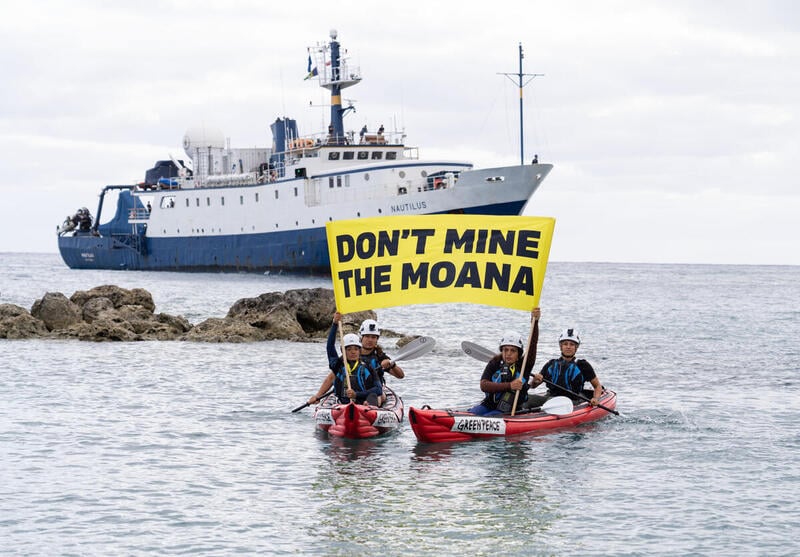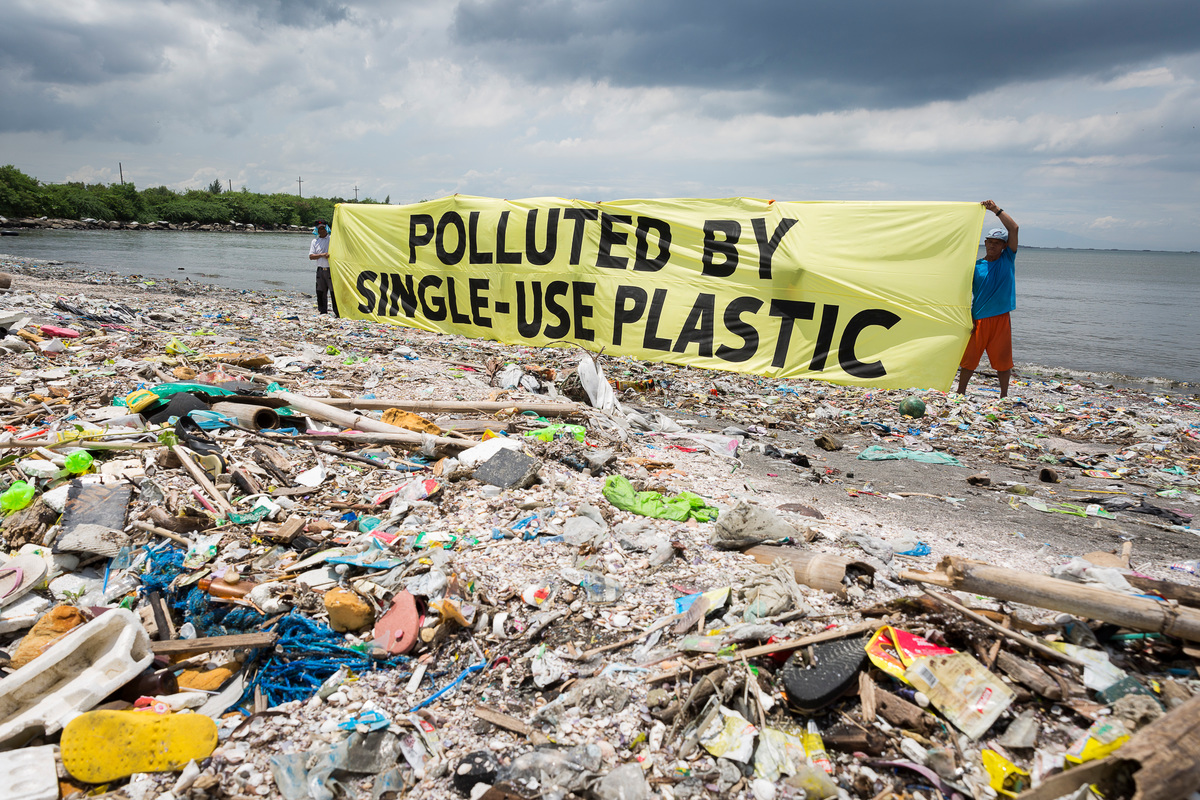For a second time, Greenpeace Aotearoa activists have confronted a bottom trawler off the East Coast, rebranding it an “ocean killer” in protest at its destructive fishing activities.
Launching from the Greenpeace vessel Rainbow Warrior, activists came alongside Sealord’s Ocean Dawn while it was bottom trawling in the Chatham Rise area on Monday morning, and painted the message on its hull.
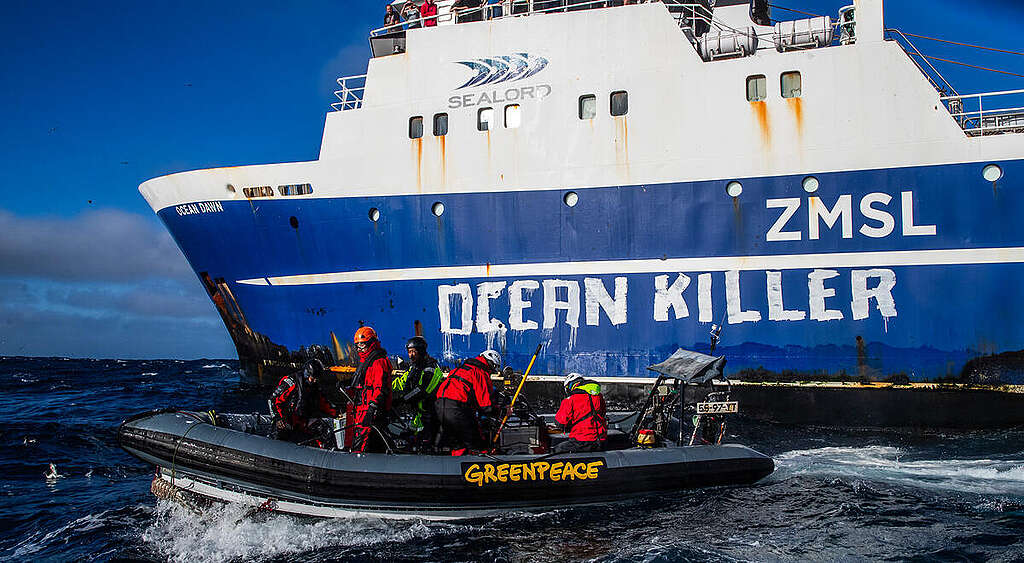 © Paul Hilton / Greenpeace
© Paul Hilton / GreenpeaceThis comes three days after activists confronted Talley’s bottom trawler, the Amaltal Atlantis, in the same area and painted “Ocean Killer” on its hull.
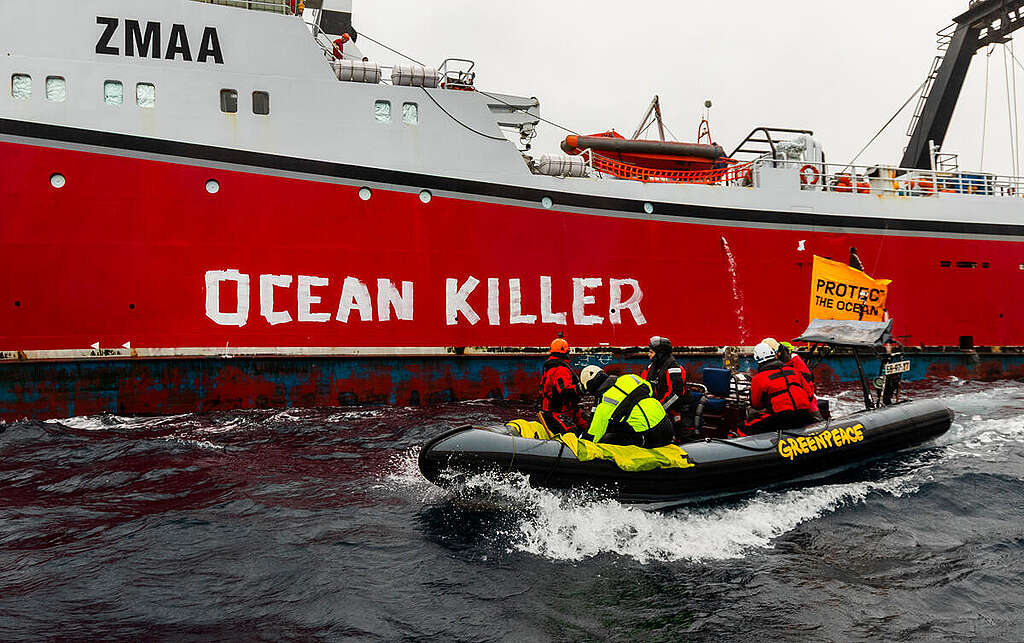
Ocean Dawn, owned by Sealord, trawls heavily on the Chatham Rise, an area known as a hotspot for coral life. In 2018, Ocean Dawn illegally trawled in a Benthic Protected Area on the Chatham Rise, bringing up 1.3 tonnes of sponges and bycatch. The vessel has also previously received permits to fish in the High Seas of the Tasman.
Speaking from onboard the Rainbow Warrior, Greenpeace Aotearoa spokesperson Juan Parada says:
“Greenpeace Aotearoa activists have again taken action to stand up for ocean life that we all want to see thrive. Today they have rebranded another bottom trawler at sea, once more calling out bottom trawlers for what they are – “ocean killers”.
“Bottom trawling is indiscriminate and destructive. When the heavy trawl nets are dragged across the seafloor and over seamounts, they turn coral into rubble, and kill fur seals, sharks and seabirds as ‘bycatch’.
“Out here, we’ve observed these trawlers operating day and night, emptying the oceans on which we all rely.
“If you were moved and horrified by the footage in David Attenborough’s Ocean, you should know it’s happening right here, right now, by multiple companies including Sealord and Talley’s.
“If we want a healthy ocean for the future, bottom trawling must stop in the places it does the most harm.”
Greenpeace has been documenting trawling off the east coast of the South Island from the Rainbow Warrior. Overnight, after multiple bottom trawling vessels stopped submitting their location information, Greenpeace tracked a mystery trawler, which turned out to be Ocean Dawn. The captain of one trawl vessel Greenpeace spoke to via radio, reported they had been given a company directive to turn the Automatic Identification System (AIS) off.
The New Zealand bottom trawling industry operates in the waters of Aotearoa, and in the High Seas of the Tasman, where New Zealand is the only country still operating a fleet.
Parada says, “The rest of the world is taking steps to protect international waters, places like the Tasman Sea where marine life is varied and abundant, from deep sea corals to migrating whales and seabirds. Shockingly, New Zealand is actively standing in the way of progress by continuing to advocate for the bottom trawling industry.
“It’s time Sealord, the trawling industry, and the government listened to the tens of thousands of New Zealanders who want ocean health valued over industry interests.
“From depleted fish numbers to smashed coral, dead sharks and seabirds, the cost of bottom trawling is too high. To protect the ocean for the future and safeguard the ocean we all love, bottom trawling must stop.”
Last week, Greenpeace documented another trawler, Thomas Harrison, also owned by Sealord, in the Cook Strait, photographing the net surrounded by seabirds and seals – which often end up as bycatch.
Notes:
- The paint used to paint the hull is water based and non-toxic
- In the period 1990 to 2004 the total area trawled in NZ waters was 465,100 square kilometres – almost double NZ’s land mass.
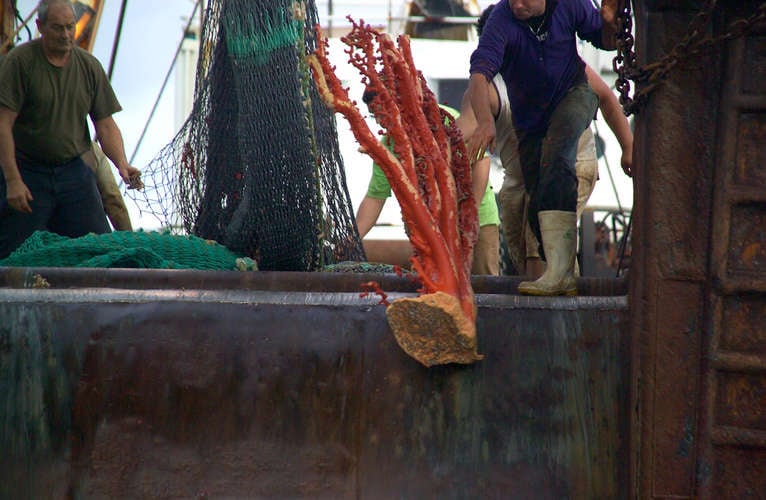
Join the call to demand that the NZ Govt bans bottom trawling on seamounts and similar deep sea features, and stop issuing permits for bottom trawling in international waters.
Take Action

